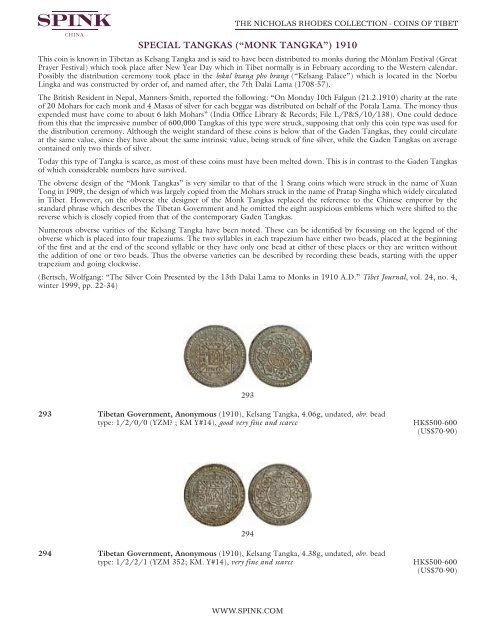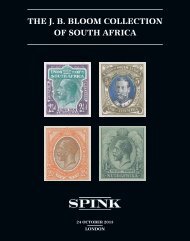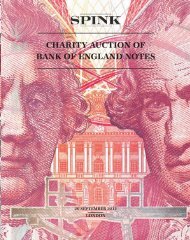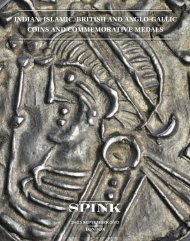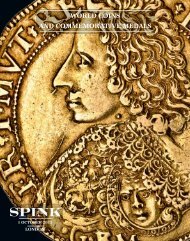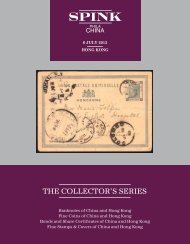You also want an ePaper? Increase the reach of your titles
YUMPU automatically turns print PDFs into web optimized ePapers that Google loves.
THE NICHOLAS RHODES COLLECTION - COINS OF TIBETSPECIAL TANGKAS (“MONK TANGKA”) 1910This coin is known in Tibetan as Kelsang Tangka and is said to have been distributed to monks during the Mönlam Festival (GreatPrayer Festival) which took place after New Year Day which in Tibet normally is in February according to the Western calendar.Possibly the distribution ceremony took place in the bskal bzang pho brang (“Kelsang Palace”) which is located in the NorbuLingka and was constructed by order of, and named after, the 7th Dalai Lama (1708-57).The British Resident in Nepal, Manners-Smith, reported the following: “On Monday 10th Falgun (21.2.1910) charity at the rateof 20 Mohars for each monk and 4 Masas of silver for each beggar was distributed on behalf of the Potala Lama. The money thusexpended must have come to about 6 lakh Mohars” (India Office Library & Records; File L/P&S/10/138). One could deducefrom this that the impressive number of 600,000 Tangkas of this type were struck, supposing that only this coin type was used forthe distribution ceremony. Although the weight standard of these coins is below that of the Gaden Tangkas, they could circulateat the same value, since they have about the same intrinsic value, being struck of fine silver, while the Gaden Tangkas on averagecontained only two thirds of silver.Today this type of Tangka is scarce, as most of these coins must have been melted down. This is in contrast to the Gaden Tangkasof which considerable numbers have survived.The obverse design of the “Monk Tangkas” is very similar to that of the 1 Srang coins which were struck in the name of XuanTong in 1909, the design of which was largely copied from the Mohars struck in the name of Pratap Singha which widely circulatedin Tibet. However, on the obverse the designer of the Monk Tangkas replaced the reference to the Chinese emperor by thestandard phrase which describes the Tibetan Government and he omitted the eight auspicious emblems which were shifted to thereverse which is closely copied from that of the contemporary Gaden Tangkas.Numerous obverse varities of the Kelsang Tangka have been noted. These can be identified by focussing on the legend of theobverse which is placed into four trapeziums. The two syllables in each trapezium have either two beads, placed at the beginningof the first and at the end of the second syllable or they have only one bead at either of these places or they are written withoutthe addition of one or two beads. Thus the obverse varieties can be described by recording these beads, starting with the uppertrapezium and going clockwise.(Bertsch, Wolfgang: “The Silver Coin Presented by the 13th Dalai Lama to Monks in 1910 A.D.” Tibet Journal, vol. 24, no. 4,winter 1999, pp. 22-34)293293 Tibetan Government, Anonymous (1910), Kelsang Tangka, 4.06g, undated, obv. beadtype: 1/2/0/0 (YZM? ; KM Y#14), good very fine and scarceHK$500-600(US$70-90)294294 Tibetan Government, Anonymous (1910), Kelsang Tangka, 4.38g, undated, obv. beadtype: 1/2/2/1 (YZM 352; KM. Y#14), very fine and scarceHK$500-600(US$70-90)WWW.SPINK.COM


